Building a reliable and high-performance network is critical for both businesses and advanced home setups, and at the heart of every well-functioning network lies the right Ethernet switch. A 24-port Gigabit Ethernet switch offers the perfect balance between ample port capacity and rapid data transfer speeds, making it an ideal choice for growing networks. But with so many options on the market, selecting the best switch for your specific needs can be overwhelming. This guide is designed to simplify your decision-making process by providing you with the key features to consider, expert recommendations and a clear comparison of top-rated 24-port Gigabit Ethernet switches. Whether you’re upgrading your infrastructure or building a new network, this article will equip you with the insights needed to make an informed choice.
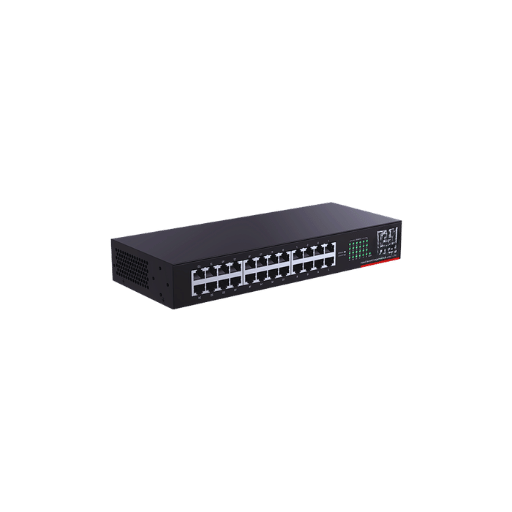
A 24-port Gigabit Ethernet switch is a network device that enables multiple devices, such as computers, servers, and printers, to communicate within a local area network (LAN). It offers 24 ports, each capable of transmitting data at speeds of up to 1 gigabit per second (Gbps). These switches are essential for managing traffic efficiently in medium to large networks, enhancing connectivity, and ensuring reliable data transfer between connected devices. Typically, they are used in offices, data centers, and other environments where numerous devices need to share resources and maintain seamless communication, making a 24-port gigabit Ethernet PoE switch particularly useful.
Gigabit technology refers to network connections capable of transmitting data at speeds of up to 1 gigabit per second (Gbps). This high-speed data transfer enables faster communication between devices, improving performance for activities such as video streaming, file sharing, and online collaboration, especially at gigabit Ethernet speeds. Gigabit technology is commonly implemented in modern Ethernet networks and is essential for supporting the growing demand for higher bandwidth in both business and personal environments.
Unmanaged switches are simple plug-and-play devices designed for basic network connectivity. They require no configuration and operate automatically, making them ideal for small networks or home use. However, they lack advanced features such as traffic prioritization or monitoring.
Managed switches, on the other hand, offer a higher level of control, customization, and security. They allow administrators to configure, manage, and monitor network settings, enabling features like VLANs, quality of service (QoS), and detailed traffic analysis. Managed switches are better suited for complex networks requiring scalability and precise management, such as those found in business or enterprise environments.
A 24-port gigabit switch plays a critical role in modern networking environments, offering both performance and scalability. Its applications and benefits include the following:
A 24-port gigabit switch improves data transfer speeds up to 1 Gbps per port, ensuring seamless and uninterrupted connectivity, even in high-demand environments. This capability is essential for handling large file transfers, media streaming, and data-intensive tasks.
With 24 ports, this switch type is ideal for small to medium-sized businesses that require room for expansion. It allows the integration of additional devices such as computers, servers, and IP phones without the need for frequent infrastructure upgrades.
A managed 24-port gigabit switch enables the configuration of Virtual Local Area Networks (VLANs), segmenting traffic to improve security, reduce congestion, and enhance data flow management across the network.
QoS features ensure prioritized bandwidth allocation for critical applications like VoIP, video conferencing, and business-critical software. This allows smooth and reliable performance for essential services.
Managed 24-port gigabit switches include advanced configuration tools for monitoring and controlling traffic. These features provide IT administrators with granular control over bandwidth usage, packet prioritization, and device connectivity.
Some 24-port gigabit switches come equipped with PoE capabilities, allowing devices like cameras, access points, and phones to be powered directly through the Ethernet cable. This reduces the need for additional power supplies and simplifies installations.
Gigabit speed ports and switching capabilities ensure low latency and high reliability, critical for real-time applications and responsive network performance in business environments.
A 24-port gigabit switch offers a balance of performance and scalability at a competitive cost, making it a practical choice for organizations requiring robust connectivity without excessive expenditure on enterprise-grade hardware.
Many models support link aggregation, allowing for 2-gigabit speeds by combining multiple physical links into a single logical link. This enhances bandwidth and provides fault tolerance for critical server or storage connections.
Modern 24-port gigabit switches often include energy-efficient designs that automatically adjust power usage based on port activity and cable length, lowering operational costs and carbon footprint.
By integrating a 24-port gigabit switch into a network, businesses, and organizations gain a reliable, high-performing backbone capable of meeting current and future connectivity demands. Its flexibility and robust feature set make it a vital component in ensuring network performance and scalability.
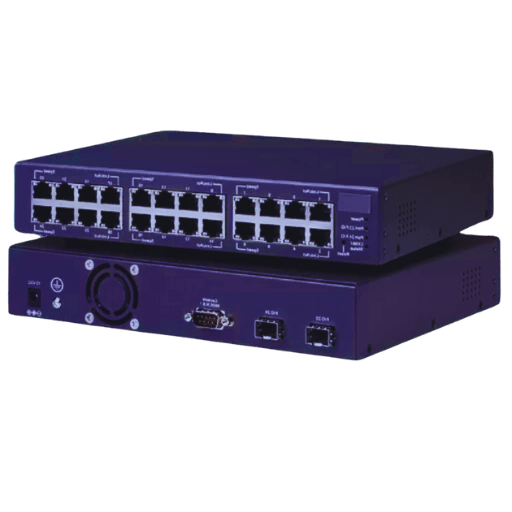
When selecting the right 24-port gigabit switch, it is important to consider several key features to ensure it meets your specific networking requirements:
Ensure the switch offers 24 gigabit ports with support for 10/100/1000 Mbps speeds. This is essential for handling high bandwidth demands, particularly in environments that require fast data transfer, such as video conferencing or large file sharing.
PoE-enabled switches provide power and data over a single Ethernet cable, enabling the connection of devices such as IP cameras, VoIP phones, and wireless access points without the need for additional power supplies. Look for switches supporting PoE+ (802.3at) to deliver up to 30W per port, ensuring compatibility with modern network devices.
A managed switch provides more control over network traffic, VLAN configurations, quality of service (QoS), and network monitoring capabilities—ideal for enterprise environments, particularly when using a D-Link DGS-1024D model. On the other hand, unmanaged switches are cost-effective and straightforward, suitable for smaller networks with minimal complexity.
Switching capacity is the total bandwidth a switch can handle. For optimal performance, choose a switch with at least 48 Gbps switching capacity for a 24-port gigabit configuration, ensuring no bottlenecks occur when all ports are operating at full capacity.
Layer 2 switches operate at the data link layer and are designed for simple routing between devices within the same network. For more advanced needs, such as inter-VLAN routing, look for Layer 3 functionality, which incorporates routing capabilities alongside switching.
Energy-Efficient Ethernet (IEEE 802.3az) features allow switches to conserve power by dynamically adjusting energy output based on port activity and cable length. This reduces operational costs while contributing to a lower carbon footprint.
Consider a switch that supports stacking or additional uplink ports for 10G connectivity to cater to future network expansion. Stacking enables seamless growth without compromising network performance.
Look for advanced security features, such as network access control (NAC), port security, and denial-of-service (DoS) attack prevention. These functionalities help safeguard your network against threats and unauthorized intrusions.
Choose a switch from a reputable manufacturer that offers a comprehensive warranty and reliable technical support. This ensures your investment is protected and assistance is readily available.
By carefully evaluating these features, you can select a 24-port gigabit switch that aligns with organizational needs, supports seamless connectivity, and prepares your network for future growth.
When considering the Netgear, D-Link, and TP-Link models, it is important to evaluate performance, reliability, and key specifications to identify the optimal choice for your network needs. Below is a comparison of some popular 24-port gigabit switch models from these brands:
|
Feature |
Netgear GS324 |
D-Link DGS-1024C |
TP-Link TL-SG1024 |
|---|---|---|---|
|
Switching Capacity |
Up to 48Gbps |
Up to 48Gbps |
Up to 48Gbps |
|
Noise Levels |
Fanless |
Fanless |
Fanless |
|
Energy Efficiency |
IEEE 802.3az standard |
Green Ethernet technology |
Up to 40% power savings |
|
Design |
Rack-mountable |
Compact/rack-mountable |
Rack-mountable |
|
Warranty |
Lifetime limited warranty |
Limited warranty |
Limited warranty |
Each model has strengths suited to different business needs. For those prioritizing long-term reliability and comprehensive support, the Netgear GS324 is a strong contender. Budget-conscious users may opt for the D-Link DGS-1024C due to its cost efficiency and performance. Meanwhile, the TP-Link TL-SG1024 excels in energy efficiency, making it an ideal solution for businesses focused on sustainability.
Switching capacity is a critical metric for evaluating network switches, as it defines the total data throughput that the switch can handle at any given time. For instance, a 24-port gigabit switch with a switching capacity of 48 Gbps ensures that all ports can operate at full duplex without throughput bottlenecks. This is crucial for businesses with high-bandwidth requirements, such as transferring large files or supporting high-definition video conferencing. Insufficient switching capacity can lead to network congestion, increasing latency and reducing performance.
VLAN (Virtual Local Area Network) support is equally essential as it allows the segmentation of a network into distinct virtual networks. This enhances security by isolating sensitive data streams and reduces broadcast domain size, improving overall network performance. For example, a business could allocate separate VLANs for departments such as finance, customer support, and general staff to ensure that network traffic is effectively managed and restricted to relevant parties. VLANs also enable more efficient use of IP address space and simplify network administration, particularly in environments requiring robust scalability.
Combining strong switching capacity with VLAN support ensures a scalable, secure, and high-performance networking solution, accommodating the demands of modern enterprises and reducing the total cost of network ownership over time.
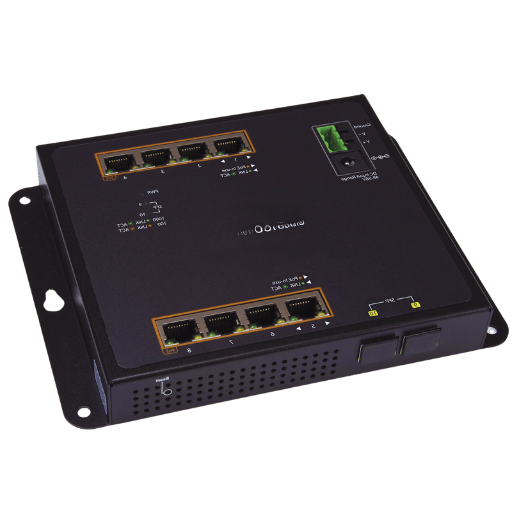
PoE enables both power and data to be delivered to devices over a single Ethernet cable, minimizing the need for additional power outlets or wiring. This streamlining reduces installation complexity, resulting in faster deployment and lower labor costs. Studies show that PoE reduces installation time by up to 50% in some environments.
Since PoE eliminates the dependency on nearby power outlets, devices such as IP cameras, wireless access points, and VoIP phones can be installed in optimal locations for performance, including ceilings, outdoor poles, or remote areas. This flexibility is particularly beneficial for building-wide network deployments.
Consolidating power and data into one cable reduces material costs, as additional electrical cabling and power adapters are not required. Furthermore, centralizing power distribution via PoE switches can help save energy by enabling remote power management. Research suggests that PoE systems can reduce wiring expenditures by up to 30%.
With PoE technology integrated into network switches, devices can be easily added without significant infrastructural changes. Centralized power management through PoE-enabled switches allows administrators to monitor, control, and troubleshoot connected devices efficiently through a unified system.
With PoE, devices can draw power directly from a centralized source, such as an uninterruptible power supply (UPS). This ensures continuous operation during power outages, improving network uptime and reliability, especially for critical devices like surveillance systems and emergency communication tools.
PoE adheres to strict safety standards, including IEEE 802.3af, 802.3at, and 802.3bt specifications, which ensure safe delivery of power without overloading connected devices. This reduces the risk of electrical hazards and provides peace of mind in compliance with industry norms.
Modern PoE technology, such as IEEE 802.3bt, supports higher power levels, up to 60W or even 100W per port. This compatibility with power-intensive devices like LED lighting, interactive digital signage, and advanced security systems ensures infrastructure readiness for future technological advancements.
By leveraging these advantages, Power over Ethernet offers a scalable, cost-effective, and efficient solution for powering and connecting modern networked devices, making it a highly attractive option for businesses and enterprises alike.
The integration of wireless access points (WAPs) and IP cameras has become a pivotal aspect of modern network infrastructure, particularly in environments that demand seamless connectivity and enhanced surveillance capabilities. Wireless access points extend network coverage, providing fast and reliable Wi-Fi connections in both indoor and outdoor spaces. They are often equipped with advanced features such as dual-band operation, MU-MIMO (Multi-User, Multiple-Input, Multiple-Output) technology, and support for the latest Wi-Fi standards like Wi-Fi 6, which delivers speeds up to 9.6 Gbps and facilitates connections for dense device environments.
IP cameras, leveraging network connectivity, offer high-resolution video streaming, motion detection, and advanced analytics features, which are critical for businesses prioritizing security. Modern IP cameras now support resolutions such as 4K Ultra HD, ensuring clear and detailed footage essential for accurate monitoring and forensic purposes. Additionally, features like remote access, cloud storage, and AI-powered analytics for object recognition and behavior tracking bring significant value to security operations.
When combined through Power over Ethernet (PoE), the deployment of WAPs and IP cameras becomes highly efficient and streamlined. PoE minimizes cabling requirements by delivering both data and power through a single Ethernet cable. For instance, IEEE 802.3bt PoE standards enable devices to receive up to 90W of power, ensuring compatibility with high-power access points and advanced IP cameras equipped with pan-tilt-zoom (PTZ) functions and heating mechanisms for outdoor durability. Studies indicate that PoE deployments can reduce installation costs by up to 30%, while reducing maintenance complexities.
This integration plays an essential role in industries such as manufacturing, retail, and smart cities, where secure, high-performance wireless networks and effective surveillance are necessary. By enabling real-time data transmission and centralized management, the pairing of wireless access points and IP cameras forms a critical foundation for smart, connected environments.
Small Form-Factor Pluggable (SFP) ports are essential in modern network switch setups, offering unparalleled flexibility and scalability for connecting diverse network components. These ports allow the insertion of modular transceivers, enabling seamless connections between switches, routers, and other devices across varying distances and media types. For instance, SFP modules can support both fiber optic and copper-based connections, providing compatibility with different network topologies and infrastructure requirements.
Data transfer speeds achieved through SFP modules typically range from 1 Gbps to 10 Gbps, with advancements like SFP28 and QSFP modules pushing the capacity up to 25 Gbps and 100 Gbps, respectively. Their hot-swappable capability ensures that network changes or upgrades can be implemented with minimal disruption, a critical factor for industries relying on high availability. Additionally, SFP ports are vital for addressing the growing demand for long-range communication, as fiber-based SFP modules can cover distances of up to 80 kilometers, depending on their specifications.
These features make SFP ports an indispensable component in settings such as data centers, enterprise networks, and telecommunication infrastructures. Their ability to optimize both performance and adaptability ensures they remain a critical asset in the evolution of modern, high-performance networking environments.
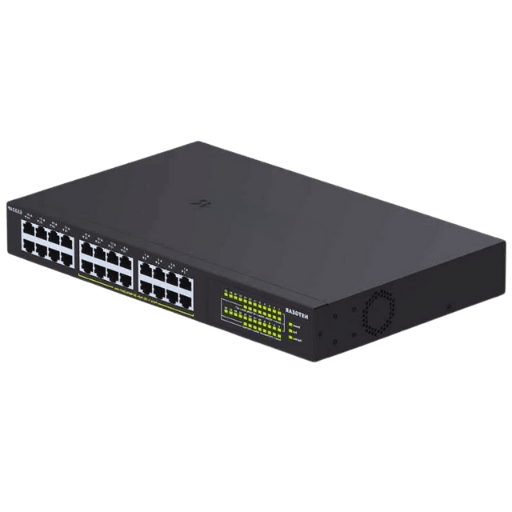
Begin by carefully unboxing the switch and inspecting all components, including the power adapter, user manual, and any additional mounting hardware. Ensure there are no visible damages or missing parts, as this may impact the functionality of the device.
Choose a stable, ventilated location for the switch to ensure optimal performance. The environment should be free from excessive dust, humidity, or heat, as these factors could degrade the hardware over time. Rack-mounted installation is generally recommended for professional environments to ensure proper organization and cooling.
Connect the provided power adapter to the switch and plug it into a reliable electrical outlet. Verify that the power LED on the switch illuminates, indicating the device is functioning correctly.
Use CAT5e or CAT6 cables to connect your network devices, such as computers, printers, and access points, to the switch’s Gigabit Ethernet ports. This ensures high-speed communication and reduces latency in data transmission. If uplink is required, reserve a specific port for the connection to the core network or router.
If the switch features SFP slots for fiber connectivity, choose compatible SFP modules based on your network’s specifications. Insert the module into the SFP slot, ensuring it fits securely, and connect fiber optic cables for long-range data transfer.
Check the LED indicators on the switch for each port to confirm active connections. A steady or blinking LED typically signifies proper communication and operational status.
Test the connectivity between devices on the network to verify the switch is functioning as expected. Tools like ping tests or third-party network monitoring software can help confirm low latency and high throughput.
Maintain a record of the switch’s installation, including the connected devices and network topology. Regular inspections and updates to associated hardware and cables will help sustain optimal performance and extend the device’s lifespan.
By following this guide, you can seamlessly integrate a 24-port gigabit unmanaged switch into your network setup. Proper installation ensures reliability and efficiency, making it a key component of a robust network infrastructure.
When it comes to cable management, I prioritize organization and accessibility. I use cable ties or Velcro straps to bundle cables neatly and label each cord for easy identification. To minimize tangling, I route cables along dedicated pathways and use cable management trays or clips whenever possible. Additionally, I ensure proper slack to avoid strain while maintaining a clean and professional setup.
To ensure optimal performance and security for your network, follow these key practices:
These steps provide a straightforward approach to maintaining a reliable and secure network environment while maximizing equipment efficiency.
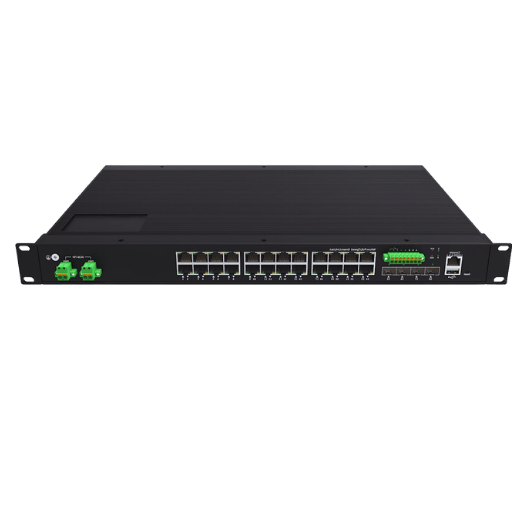
Fanless designs eliminate the need for internal fans, resulting in completely silent operation. This is especially beneficial in environments where noise reduction is important, such as offices, meeting rooms, or home networks. By relying on passive cooling methods, fanless switches reduce moving parts, which can also lead to improved reliability and a lower risk of mechanical failure over time. Additionally, without fans, energy consumption may decrease slightly, contributing to greater overall efficiency.
When evaluating the energy efficiency of 24-port switches, fanless models tend to offer measurable advantages in power consumption, making them ideal for a small office network. For instance, modern fanless switches such as the Netgear GS324T feature a power consumption of approximately 13 watts under typical operation, which is notably lower compared to traditional fan-cooled models that average between 20-30 watts. This significant reduction translates to lower operational costs over time, especially in setups where multiple switches are deployed.
Additionally, energy-efficient models often incorporate features like Energy Efficient Ethernet (EEE), which dynamically adjusts power usage based on network activity. For example, the Cisco SG112-24 supports EEE and consumes as little as 10 watts during idle periods. This technology not only enhances energy conservation but also reduces heat output, further supporting passive cooling systems.
Comparatively, managed switches such as the TP-Link TL-SG1024DE offer a balance of energy efficiency and functionality, consuming around 18 watts under load while providing advanced management features. These variations in energy consumption highlight the importance of selecting a switch tailored to specific network requirements. By focusing on power-efficient designs, businesses, and home users can achieve a more sustainable and cost-effective networking solution.
When evaluating network switches for office and home environments, considerations such as scalability, energy efficiency, and ease of management play a vital role. For small to medium-sized offices, managed switches like the Netgear GS752TP deliver a robust combination of performance and security, supporting up to 48 ports with Power over Ethernet (PoE) capabilities, which are essential for powering devices like IP phones and security cameras. These switches often include features such as VLANs and advanced Quality of Service (QoS) to prioritize key traffic, ensuring optimal performance even during peak usage.
For home environments, simplicity and cost-efficiency are generally prioritized. Unmanaged switches such as the TP-Link TL-SG108 are often sufficient, providing 8 ports, gigabit speeds, and plug-and-play installation. With a power consumption of under 4.5 watts, this model aligns well with modern energy-saving standards, making it an excellent option for a home network designed for streaming, browsing, and smart devices.
Data suggests that the average power consumption of managed switches can range from 15 to 30 watts, depending on the number of active ports and additional features. Conversely, unmanaged switches generally use less than 10 watts, reflecting their streamlined functionality. By assessing the specific network demands—such as the number of devices, need for management capabilities, and energy usage—a choice can be made that aligns with both the technical requirements and sustainability goals of the intended environment.
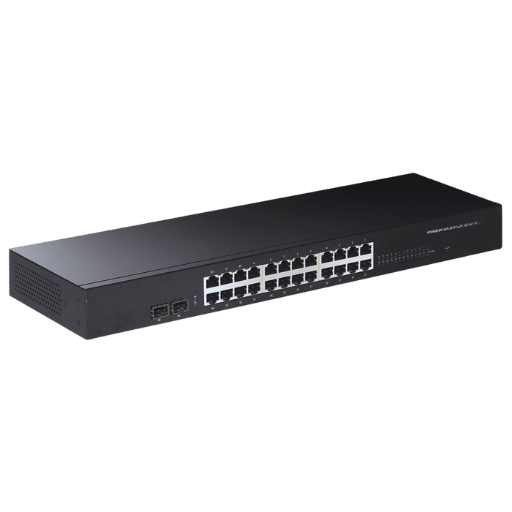
A: With 24-gigabit ethernet ports available, a 24-port gigabit ethernet switch allows for easy connectivity as well as increased bandwidth and enhanced performance for your office network. This device supports gigabit speeds which means faster data transfer and better network traffic processes within the system.
A: A 24 port gigabit switch comes with uplink ports that facilitate quick and easy connections to other switches or other network devices. This allows for an easier expansion of the network with better communication between multiple switches. An uplink port is important for the interconnection of several network segments.
A: Definitely, a 24 port unmanaged gigabit switch is ideal when it comes to plug-and-play configuration and does not require further setup. It caters to direct ethernet connections from different devices, and the switch controls the traffic flow automatically.
A: The 24-port gigabit power switch bestows Power over the Ethernet (PoE); hence, it can provide power to connected devices such as PoE cameras and other devices that support PoE. In contrast, a standard 24 port gigabit switch does not have this capability and exclusively transfers data.
A: The bandwidth of a 24-port unmanaged switch without a specific Gigabit prop is rated at up to 48 Gbps. This means that even with many devices connected, data can be moved throughout the network efficiently and quickly.
A: Multiple devices, including computers, servers, printers, and even PoE-powered devices such as IP cameras can be connected to the RJ45 ports on a 24 port gigabit ethernet switch. These ports accept typical ethernet cables which guarantee proper connection.
A: Yes, several 24 port power switches gigabit are made with rack mount capability which assists in structured cabling areas where space saving and order is a priority. They tend to be implemented in data centers, as well as in expansive office network systems.
A: The benefits of having gigabit ethernet ports on a single switch are the speed of data transfer of up to 1 Gbps per port and the high overall efficiency of the ports. The network performance is optimized as all connected devices in the network can communicate with each other at the same time, which reduces latency. Having all ports in one switch enables the devices to have maximum network efficiency.
A: Usually, a managed switch is required to handle VLAN configuration; nevertheless, some 24-port ethernet switches possess basic VLAN features enabling them to segment network traffic. This ensures greater security as users can differentiate and isolate the different segments of the network.
1. The Design and Implementation of a 1×8 Core Selective Switch Using A Bundle of 3 Five Core Fibers at 15 Cores Per Port
Summary:
Key Findings:
Methodology:
2. Validation of Multilevel 24-port Microwave Imaging System for Brain Stroke Monitoring on Synthetic Numerical Data
Summary:
Key Findings:
Methodology:
3. A 28-GHz Butler Matrix-Based Switched Beam-Forming Network with a Phase Inverting Switch for Dual-Port Excitation in 28-nm CMOS
Summary
Key Findings
Methodology